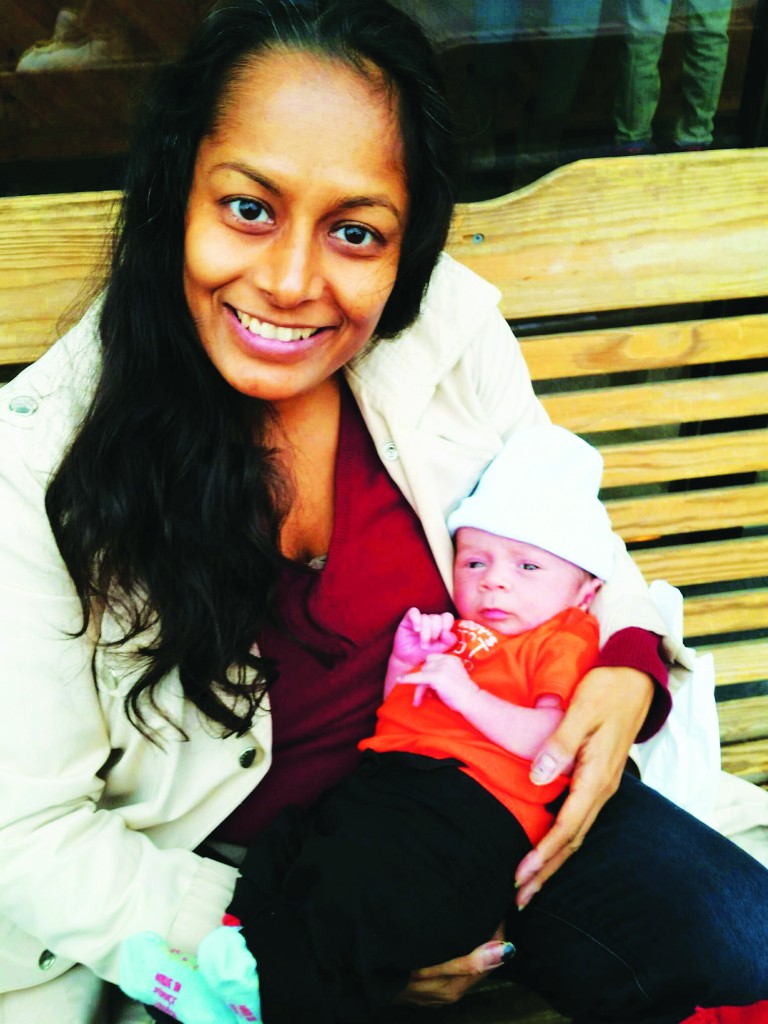There’s pivotal moment in every mom’s life after the birth or adoption of her child when she decides she has the space, desire, and need for self-care. This can come in the form of returning to the book by the bedside that’s been there since 36 weeks, or returning to her favorite yoga class. Unfortunately, for working moms, this moment sometimes comes later, and for me, it came a year after my child was born and I went on my first retreat. From there, I was inspired to head back (reluctantly) to the gym. And that’s where I met Natasha Forrest.
I think there’s a Natasha in many of our lives. She’s the woman you randomly meet in the library or bar who is just a kick-ass woman, and then you realize that not only is she a mom, but she’s also doing amazing and unconventional things in their career. Natasha is even more of an inspiration for me because she’s a single mom. Natasha was a full time accountant, with crazy hours, doing part time fitness training on the side, when she was let go from her job during a company lay-off. Her son was one at the time (he’s now five), and she decided she actually liked her part time job more. She had the choice to find a new accountant job, or follow her dreams.
So she decided to go for it.
The irony of having a child is that is gives you a deep awareness of what truly matters to you, but the clarity it shows you is even harder to put into place because you now have another being completely dependent on you. I left my ad agency job after I had Ananda to go back to writing and filming for social good. I have friends who left their jobs after having a kid to pursue their novel or graduate degree. I realize this is a position of economic privilege – to be able to leave your stable job to pursue a risky alternative. With Natasha the courage was even more profound because she is the primary caretaker. “Is it selfish? Of course it is. And I don’t think there’s anything wrong with that. You have to look out for you. At the end of the day no one else is going to,” she said honestly.
It’s a way of being and speaking we are not comfortable with because of many of the parameters of guilt and shame often put onto moms. I myself am often overwhelmed by the guilt that comes with caring about something outside of my child. I feel it both as a social taboo and a biological pull. Annabel Crabb once said: “The obligation for working moms is a very precise one: the feeling that one ought to work as if one did not have children, while raising one’s children as if one didn’t have a job.”
It’s even more audacious for moms who love their job and pursue dreams, because they love what they do, and want to do more of it. I asked Natasha how she copes with the guilt, and she responded that following what she loves actually enables her more flexibility to be with her son. “I set my own hours, I don’t stay up all night stressed out with work.”
I found myself making similar adjustments when I took on the lead communications role at a global NGO based in South Africa. I start working as soon as I wake up at 6am on most days, to make sure I can pick up Ananda by mid-afternoon. My job involves deadline pressures, conference presentations, and frequent travel – all of which sit with my personality quite easily. But I still catch myself justifying my career: whenever someone asks “wow, how do you balance all the hours” or “don’t you miss your son when you’re away?” I immediately explain how the job allows me flexibility to be on his schedule so I still spend half the day with him.
What’s shocking is how much I’ve internalized this, to the point that when someone says “sounds like the perfect job for you”, I still respond with the script of “but I do it cause I can make the hours work”. When did following our own dreams feel like such a guilty pleasure?
Motherhood and careers hardly feels a balance – it feels more like an avalanche. Natasha has worked hard the last four years, getting training certificates, putting in extra hours, all while managing drop offs and pick-ups. She’s had a series of promotions – and an insanely toned body – to show for it. She also has a wonderful, active son. The worst thing about giving your all to your career and your family is that you’re exhausted. “When I’ve been training all day, I’m tired at 9 and can’t play soccer with my son,” she confides.
Ironically, listening to Natasha’s long-term commitment to herself and family gave me the strength to pursue my last selfish goal: to get back to working out regularly. I’ve started to see exhaustion as not a reason to not do something, but as part of the journey.
It’s always about trade-offs. But it’s also about being happy. And when a mom is happy, often her children and families are too. Natasha may be an ambitious personal trainer and single mom but she’s one happy woman, and I can imagine her son is better off for it. “I still sometimes ask myself when I’m going to get a real job,” she jokes. Then she turns and asks me to give her another set of mountain climbers.

